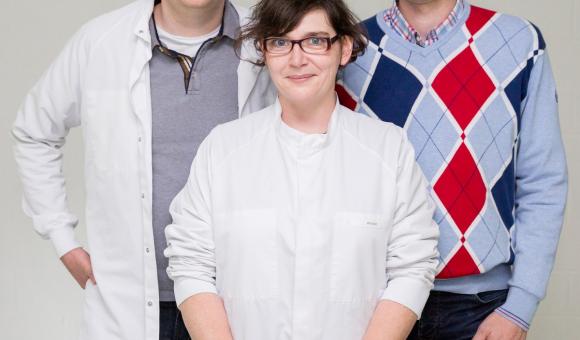The Cerhum company, together with the 3D-Side company is revolutionising cranio-maxillofacial and reconstructive surgery by creating a “tailor-made” implant. For the patient, this innovation is, in particular, going to enable a better quality of care and a decrease of side effects.
The technology has fully involved the healthcare sector to improve the patients’ life expectancy. Today, the human body, outcome of an extraordinary development over thousands of years, may, for certain pathologies, be “almost” completely reconstructed. In Liège, researchers have spent years finding the right materials which enable almost ‘identical’ operations. The Cerhum team, who make ceramic implants, is close to succeeding in this challenge due to the perseverance and tenacity of Grégory Nolens, doctor in biomedical sciences: “We have based our research on a revolutionary material. It enables stimulating bone regeneration without any rejection or contamination.”
3D and biocompatibility
Named MyBone, it combines two essential elements of today’s health world: a basic calcium phosphate material and a brand-new implant technique. Due to similar properties to the human bone, and 100% biocompatible and durable, it is adaptable depending on the body part to be reconstructed. To finally launch this product, Cerhum and its 3D technology have been able to rely on the planning software developed by 3D-Side. In particular, this addition of skills offers Cerhum the opportunity to become a manufacturer of value added implants in the cranio-maxillofacial field. Today, Cerhum, set up in the Liege Science Park and established in 2015, is already active in orthopaedics (spinal), dental specialisation and reconstructive surgery.
Multiple operations possible
Different types of patients are affected by this new technology. In fact, surgeons can use it for various high precision operations: maxillofacial and reconstructive surgery and also orthopaedic, plastic surgery.... Grégory Nolens gives a very clear example: “We could enable a faster and more reconstructive ‘cleft-palate’ operation. We are able, from micro tissue samples, to regenerate the bone due to the bone implant. The main advantage is to dramatically reduce the number of operations to reconstruct a severe cleft palate.” According to him, the impact for the patient can be significant: better quality of care, mini-invasive surgery, decrease of side effects. “From the doctors’ point of view, comments are positive also because it reduces operation times in particular. They also appreciate our innovative method that enables the rejection rate to be considerably reduced.” In practice, the surgeon logs in from a digital platform and consults the patient’s data through his medical imaging (CT-Scan, MRI and CB-T) This enables him to adjust the implant that will be placed in his patient with great precision during an operation. All the data is then sent to Cerhum. The company then goes into its manufacturing process followed by inspecting, sterilising and dispatching the device.
Belgian and foreign hospitals
After all the tests and certification phases, the company's aim is to be on the market by the end of 2019 with an initial patient operated on and to commence clinical trials. Currently, it is already collaborating with different hospital sites in Belgium (CHU Sart Tilman, Chirec...) and abroad such as in Spain, England and Germany. “In addition, surgeons at UCL and Gand are assessing and working with 3D-Side products to plan complex operations in an operating theatre.” Obviously, for such major operations, financial return for this new type of material is essential. In the future, the company hopes to have an initial financial return for cranial operations “We want to attract the health authorities’ attention and show that our invention and the operations resulting from it enable considerable savings given the reduction of the number of actions to be made.”
A financial challenge
In three years the aim is to create 25 direct jobs and 50 indirect jobs, and Cerhum has already been able to count on clear support such as that of Meusinvest, which has put in 15.5% of the capital, and also on a contribution of 2 million Euro from the Walloon Region. “We are also making great progress on increasing our capital which will be 5 million Euro.” There is no doubt that in the coming months other public or private investors will be interested in the new Walloon medical gem. With the daily number of reconstruction operations in Belgium, associated with both accidents and diseases, the sector is growing fast. “We are keeping an eye on the various European markets and we are watching the development of regulations in our sector before launching into the Asian market. In the meantime, we are benefiting from the work of an Explort student in the USA. He is meeting surgeons, insurance companies and universities in Texas and investors for our future development in that country”, states Grégory Nolens. Already yet another challenge for this young company.
By Vincent Liévin








